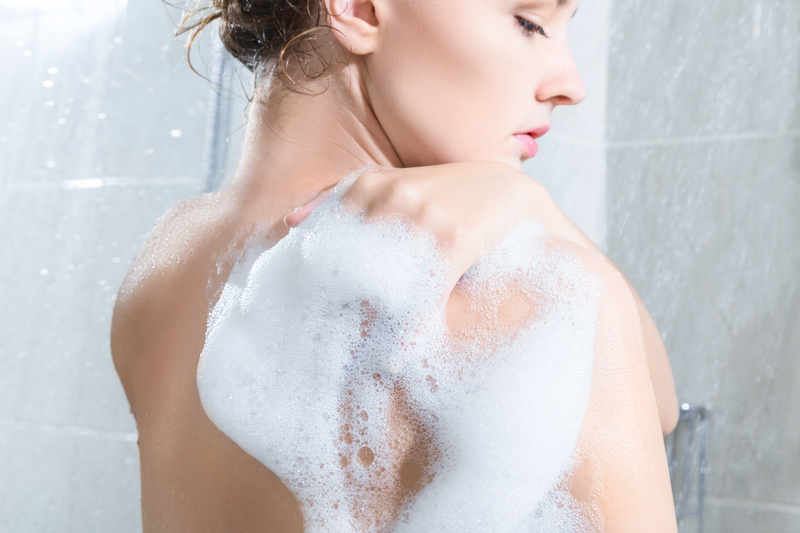Polish Your Car Like a Professional: Step-by-Step Cleaning Guide
Posted on 15/09/2025
Polish Your Car Like a Professional: Step-by-Step Cleaning Guide
Is your beloved ride losing its glossy, showroom shine? With the right techniques and tools, you can polish your car like a pro at home. Whether you're looking to restore a brilliant finish, boost your car's value, or simply indulge in car care therapy, a good polish is essential. This comprehensive step-by-step car polishing guide will walk you through everything you need to know--from preparation to that final, head-turning gleam.
Why Regular Car Polishing Matters
Car polishing is more than just cosmetic--it's a critical part of vehicle maintenance. Here's why it should be a regular habit:
- Restores lost shine and color: Polishing revitalizes your car's paintwork, bringing out a rich, deep gloss.
- Removes surface imperfections: Light scratches, swirls, oxidation, and water spots can all be reduced or eliminated.
- Prepares surface for waxing: A polished finish ensures wax or sealant forms a perfect protective barrier.
- Enhances resale value: A polish-savvy vehicle is more attractive to buyers and can command a higher price.
For both hobbyists and everyday drivers, professional car polishing is the key to long-lasting beauty and protection.

What You'll Need for Pro-Quality Car Polishing
Gather your supplies before starting. Investing in high-quality products not only delivers better results, but also protects your car's finish.
- Two buckets: One for soapy water, the other for rinsing.
- pH-balanced, automotive-specific shampoo
- Wash mitts or soft sponges
- Microfiber towels
- Clay bar kit (with lubricant)
- High-quality car polish (compound, polish, or all-in-one)
- Dual-action (DA) polisher or orbital buffer (optional, but recommended for best results)
- Polishing pads (foam or microfiber, depending on polish type)
- Detailing tape (to protect trim and rubber seals)
- Car wax or paint sealant
- Wheel cleaner and tire dressing (optional, for a complete detail)
Step 1: Thorough Wash--A Clean Canvas
How To Properly Wash Your Car Before Polishing
Before polishing, removing all dirt and debris is crucial to prevent scratches. Here's the method professional detailers use:
- Rinse your car: Use a hose or pressure washer to remove loose dirt.
- Two-bucket method: Fill one bucket with water and car shampoo, the other with plain water. Dip your mitt into the soap, wash a section, rinse in the clean water, repeat.
- Work from top to bottom: Gravity pulls dirt down. Start with the roof and finish with the lower panels, wheels, and tires last.
- Rinse thoroughly: Ensure all soap is washed off.
- Dry with microfiber towels or a dedicated car dryer to prevent water spots.
Tip: Never use household detergents--they can strip wax and dull paint.
Step 2: Claying--Remove Embedded Contaminants
Why and How to Clay Your Car
Even after washing, your car's paint can feel rough to the touch due to embedded contaminants. A clay bar safely pulls out these particles and preps your paint for flawless polishing.
- Spray clay lubricant on a 2'x2' section.
- Gently glide the clay bar back and forth (never in circles!).
- Knead the clay as it gets dirty, exposing a clean surface.
- Wipe the area with a microfiber towel.
- Test: The paint should feel glassy smooth. Repeat as needed.
Step 3: Inspect the Paintwork
Find Imperfections Before Polishing
Once your car is clean and smooth, examine it carefully under bright light. Look for swirl marks, water spots, oxidation, and scratches. Mark problem areas with detailing tape or post-it notes. This step ensures you spend extra time where it matters most.
Step 4: Taping--Protect Trim and Delicate Areas
Professional detailers always use detailing tape around rubber trims, plastic moldings, and emblems to avoid accidental staining or burning with a polisher. Take your time on this step!
- Apply tape to window seals, badges, and adjacent textured plastics.
- Double-check headlight and taillight edges.
Step 5: The Art of Polishing--Manual or Machine?
Hand Polishing vs. Machine Polishing: Which Is Better?
- Hand polishing: Suitable for minor corrections or delicate areas. Less risk of damage, but slower and less effective on heavy scratches.
- Machine polishing (DA/dual action): Faster, more consistent results. Ideal for correcting swirl marks, oxidation, and moderate scratches.
Using a DA polisher bridges the gap between professional detailers and DIY enthusiasts. It's safe for beginners and produces a mirror-like finish.
How to Polish Your Car By Hand
- Apply a pea-sized amount of car polish to a foam or microfiber applicator pad.
- Work on a small section (about 2'x2'), using back-and-forth overlapping motions.
- Apply gentle, even pressure--don't scrub hard!
- Buff away excess polish with a clean microfiber towel.
How to Polish with a Dual-Action Polisher
- Attach the right pad (usually foam for standard polish, microfiber for heavier correction).
- Apply polish to the pad--use 3-4 small drops.
- Spread polish on paint with the machine off, then turn on at a low setting.
- Work in slow, overlapping passes (side-to-side, then up-and-down), letting the polisher and pad do the work.
- Wipe with a microfiber cloth to remove residue and reveal the shine.
Tip: Resist the urge to over-polish. Two to three passes are enough on any section. Avoid letting the pad dry out.
Step 6: Inspect and Repeat as Needed
- Check results in direct sunlight or with an LED inspection light.
- If imperfections remain, repeat polish with a gentler product or pad.
- For severe scratches, consult a professional to avoid over-thinning clear coat.
Step 7: Finishing Touch--Protect the Shine With Wax or Sealant
Polishing removes minor paint defects and primes the surface, but protection is paramount. Apply a high-quality wax or paint sealant for up to six months of hydrophobic, UV-resistant protection.
- Use a clean applicator pad to apply wax in thin, even layers.
- Let it haze (per product instructions) and buff with a microfiber towel.
- For synthetic paint sealants: these can be layered for longer-lasting protection.
Step 8: Final Details--Wheels, Tires, Glass
Don't let your freshly polished car be let down by dusty wheels or streaky glass! Professional car detailers finish every job with these extras:
- Clean wheels and dress tires with dedicated products.
- Polish chrome or stainless steel exhaust tips.
- Clean glass inside and out for crystal clear visibility.
- For a true show-car look, consider detailing engine bay and door jambs.
Top Professional Tips for Superior Car Polishing Results
- Work in a shaded area or garage to prevent water spots and premature drying of products.
- Use clean, soft microfiber towels at every stage to avoid swirling your paintwork.
- Change polishing pads frequently--a clogged pad is less effective.
- Inspect each section as you go--don't wait until the end to check for missed spots.
- Always read and follow product instructions for best results and safety.
Common Mistakes to Avoid When Polishing Your Car
- Skipping the claying step--causes contaminants to scratch paint during polishing.
- Using too much force with a polisher--can lead to "burning" the clear coat.
- Neglecting to clean pads and towels--spreads old polish, wax, and grime.
- Applying too much or too little product--impacts effectiveness and ease of removal.
- Rushing the process--quality car care takes time and patience.

Frequently Asked Questions About Car Polishing
How often should I polish my car?
Most experts suggest polishing twice a year. Over-polishing can thin the clear coat, so only polish as needed based on the paint condition.
Is waxing the same as polishing?
No. Car polish removes minor defects and enhances shine; wax or sealant protects the surface after polishing.
Can I polish a new car?
Only if necessary! New cars sometimes arrive with minor transport or dealer-induced swirls, but aggressive polishing is usually not needed. Start with a gentle polish.
What is a swirl mark and how do I prevent them?
Swirl marks are fine, circular scratches from improper washing or drying. Prevent them by always using clean microfiber towels, the two-bucket method, and quality wash mitts.
The Final Word: Shine Like a Pro, Every Time
Polishing your car like a professional is easier than ever with today's advanced products and tools. Just follow these step-by-step cleaning and polishing instructions and you can restore that coveted mirror-gloss finish on your own driveway. Not only will you transform your car's appearance, you'll also protect its value for years to come.
Ready to Get Started?
- Block off a few serene hours, grab your favorite playlist, and treat your car to a spa day.
- Your car--and neighbors--will thank you for that professional, head-turning finish!
If you found this guide useful, share it with fellow motoring enthusiasts--and happy polishing!





